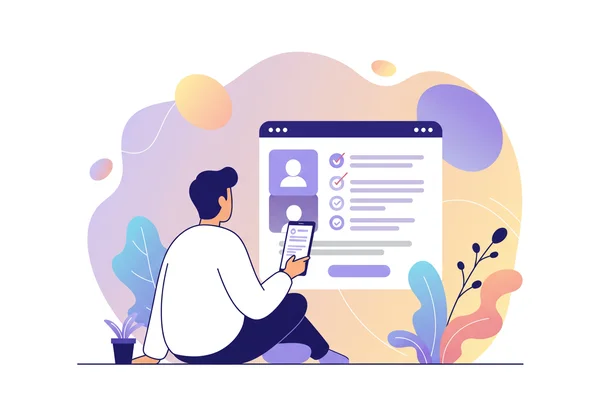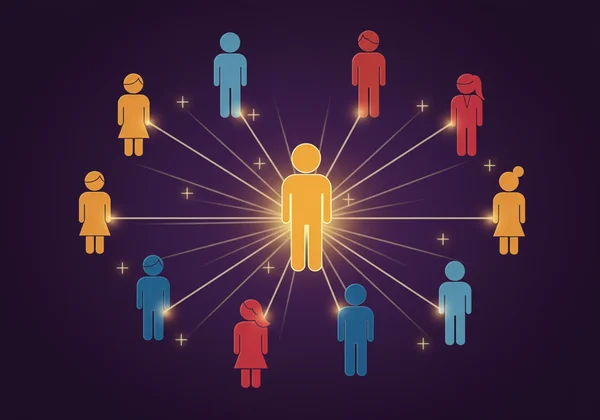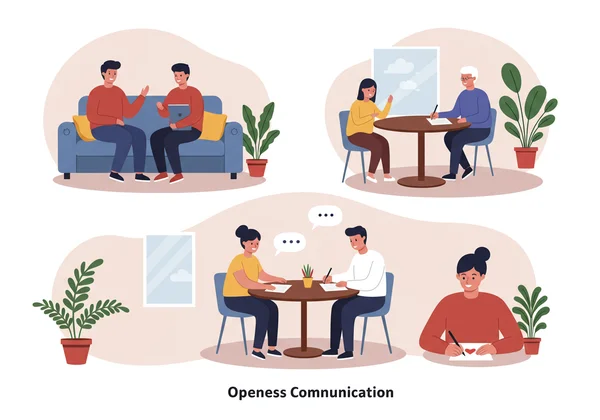Coming Out: An LGBTQ+ Orientation Guide for Self-Discovery
Taking the courageous step of coming out is a pivotal moment in your journey of self-discovery. It's a deeply personal process of sharing your authentic self with others. Whether you're a questioning teen or a curious explorer, navigating this path requires thought, self-compassion, and a focus on your well-being. But perhaps the biggest question is, how do you know if you're ready? This guide offers practical, empathetic advice to help you decide when, how, and to whom you might share your truth, ensuring you feel empowered every step of the way.
Self-exploration is the foundation of this entire process. Before you can share your identity with others, it's helpful to understand it for yourself. For many, a great first step is a private, reflective exercise. Taking a confidential LGBTQ+ orientation quiz can provide a safe space to process your feelings without pressure or judgment, helping you build the confidence you need for the journey ahead.

Is It Time? Understanding When to Come Out
Deciding on the right time to come out is less about a date on the calendar and more about a feeling of internal readiness and external safety. From a psychological perspective, this decision balances your personal need for authenticity with a realistic assessment of your environment. There is no "right" age or perfect moment; there is only what is right for you.
Assessing Your Readiness: Are You Prepared?
True readiness comes from within. It’s about feeling comfortable with yourself, regardless of how others might react. Assessing your personal readiness means checking in with your emotional state. Do you have a basic understanding and acceptance of your own sexual orientation? Remember, you don't need all the answers, but feeling a sense of peace with who you are is a powerful anchor.
This internal work is a journey in itself. It involves self-reflection and learning about the diverse spectrum of identities. If you are still exploring, tools like an am I gay test can serve as a valuable part of this process, providing insights that reinforce your feelings. The goal is to reach a point where you can say, "This is who I am, and I deserve to be happy," before you even begin a conversation with someone else.
Considering Your Environment: Safety & Support Systems
Your safety is paramount. Before coming out, it's crucial to evaluate your environment. Considering your environment and support systems means honestly asking yourself: "Will I be safe emotionally, physically, and financially if I share this part of myself?" This is not about pessimism; it's about strategic self-preservation.

Start by identifying at least one or two people you believe will be supportive—a trusted friend, a cool aunt, or a school counselor. These individuals can become your "soft landing" and your first allies. If you are a minor or financially dependent on family who you suspect may react negatively, it is often wise to wait until you have more independence. Your well-being comes first, always.
How to Come Out: Crafting Your Message
Once you feel ready and have assessed your environment, the next step is figuring out how to come out. There is no single script that works for everyone. The best approach is one that feels authentic to you and your relationships. It’s about crafting a message that is clear, honest, and rooted in your personal experience.
Different Approaches: From Casual Chats to Formal Discussions
Your method of coming out can take many forms. For some, a casual mention in a relaxed conversation feels most natural. For example, saying, "I went on a date with a great guy the other day" can be a low-key way to share. Others may prefer a more structured, formal discussion, especially with close family members, where they can sit down and explain their feelings without interruption.

Other methods include writing a heartfelt letter or email, which gives you the space to organize your thoughts and allows the recipient time to process the information before responding. There is no hierarchy of methods; the best one is what reduces your anxiety and gives you the most control over your own narrative. Part of this control comes from understanding yourself, a process that a confidential sexual orientation test can support.
Preparing for Reactions: What to Expect and How to Respond
One of the biggest sources of anxiety around coming out is the fear of negative reactions. Preparing for potential reactions can help you stay grounded. Hope for the best, but prepare for a range of responses: acceptance, confusion, surprise, or even disapproval. Remember, their reaction is a reflection of their own journey and understanding, not a judgment on your worth.
If you encounter questions, answer them honestly but without feeling pressured to defend your identity. Use "I" statements, such as "I feel happiest and most myself when I can be honest about who I'm attracted to." If the reaction is negative, it's okay to set a boundary and say, "I can see this is a lot for you to take in. Let's talk more later when you've had time to think." Having a support person to call afterward can be incredibly helpful.
Who to Tell: Navigating Your Support Circle
Deciding who to tell is a strategic process that you control completely. You are not obligated to come out to everyone at once, or at all. Think of it as opening doors one at a time, starting with those you trust most. This gradual approach allows you to build a circle of support that can sustain you as you share your story more widely.
Coming Out to Family: Tips for Telling Loved Ones
For many, coming out to family feels like the most significant step. Choose a time when you can speak privately and without rush. Avoid major holidays or during a heated argument. Be prepared that they may have questions or need time to process, especially if their understanding of LGBTQ+ issues is limited.
Lead with love and your relationship. You could start by saying, "Our relationship is so important to me, and there's something I want to share to be more honest with you." Reassure them that you are still the same person they have always known and loved. This conversation is often the start of a new chapter, not the end of one.
Sharing Your Truth with Friends, Colleagues & Others
Beyond family, sharing your truth with friends and colleagues is your choice. Start with your closest friends—the ones who have earned your trust. Their acceptance can build your confidence to share more broadly if you choose.
When it comes to the workplace or wider social circles, you are in complete control of your privacy. You decide what to share and with whom. Living openly can be incredibly liberating, but it should always be on your terms and timeline. As you navigate these steps, remember that self-discovery is ongoing. Tools like a free gay test can be revisited anytime you need a moment of private reflection.
Embracing Your Truth: A Continuous Journey
Remember, coming out is a deeply personal and evolving process. There's no single finish line, just continuous steps toward embracing and sharing your authentic self. Focus on what feels safe and right for you, moving at your own comfortable pace.
Your feelings are valid, and your identity is beautiful. Whether you are just beginning to question or are ready to share your truth with the world, know that you are not alone. Resources are available to support you. To better understand your own feelings in a safe and private space, we invite you to begin your self-discovery. Our quiz is designed by LGBTQ+ community members and allies to be a supportive tool for your personal exploration.

Frequently Asked Questions About Coming Out
Is there a "right" age or time to come out?
No, there is absolutely no "right" age or time. The best time is when you feel personally ready and have assessed that you are in a reasonably safe environment. For some, that’s in their teens; for others, it's much later in life. Your journey is unique, and honoring your own timeline is the most important part of the process.
What if my family or friends react negatively?
It's a valid fear, and unfortunately, it can happen. First, prioritize your safety and well-being. Lean on the allies you've already identified in your support system. It’s also important to remember that people's initial reactions can change over time as they learn and process. Seek out support from organizations like PFLAG or The Trevor Project, which offer resources for you and your family.
Do I have to come out to everyone I know?
Absolutely not. You are in complete control of who you tell and when. Some people choose to be out in all aspects of their lives, while others are only out to close friends and family. It is not a requirement for living an authentic life. Your comfort and safety are what matter most.
How can I find support if I'm not ready to come out yet?
There are many ways to find support even before you come out. Online communities and forums for LGBTQ+ youth and adults can be a great source of anonymous connection. You can also explore resources on websites like ours. Taking a confidential LGBTQ test is a way to connect with your feelings privately and can be a powerful form of self-support.
Disclaimer: This guide is for informational purposes only and does not constitute professional psychological advice. If you are in distress, please reach out to a mental health professional or a crisis support service like The Trevor Project.